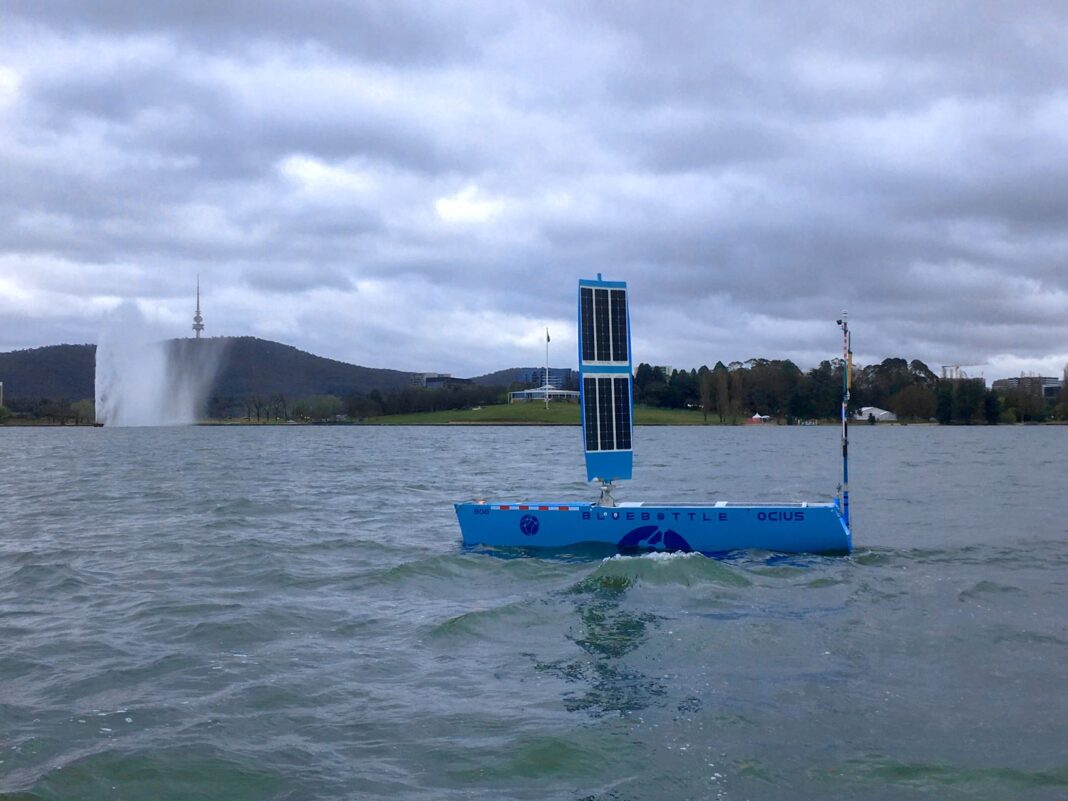Lake Burley Griffin played host to two visitors this week in the form of Ocius Technology’s Bluebottle Unmanned Surface Vessels (USVs), ‘Bruce’ and ‘Bob’.
The Australian-built technology was on display in the lead-up to the Australian Autonomous Vessel Forum being held in Canberra on 19-20 September, hosted by the Australian Maritime Safety Authority (AMSA) and the Trusted Autonomous Systems Defence Cooperative Research Centre.
The forum will explore the challenges, opportunities, risks and priorities for regulation of technologies, systems and infrastructure that will support remote and autonomous operation of vessels in Australian waters.
Ocius Technology CEO Robert Dane said they have been working with AMSA “to help get sensible regulatory requirements around this rapidly evolving technology”.
He said “everybody knows” unmanned systems are coming, but “we want to do this in a safe way”.
Mr Dane said one of the main challenges is not hitting anything else, with the “bluebottles” on display featuring collision avoidance technology using beacons and visual cameras.
According to Mr Dane, the technology has a range of applications and is designed to help scientists, Defence and industry to “monitor large areas of ocean a long way from the mainland at really low cost and nobody in harm’s way”.
This could include anti-submarine warfare, mine counter measures, maritime surveillance, environmental monitoring, sea bed mapping and more.
In terms of applications on Lake Burley Griffin, Mr Dane said ‘Bob’ and ‘Bruce’ would not normally be used here because their main feature is the ability to go over the horizon, and long distances from the mainland. The bluebottles harvest the power of the sun, the wind and the waves, so they can advance under all conditions and can remain at sea for months at a time.
Instead, Mr Dane said smaller, “man portable” options could be used in the lake as a way to monitor pollution, turbidity or currents.
More stories:



